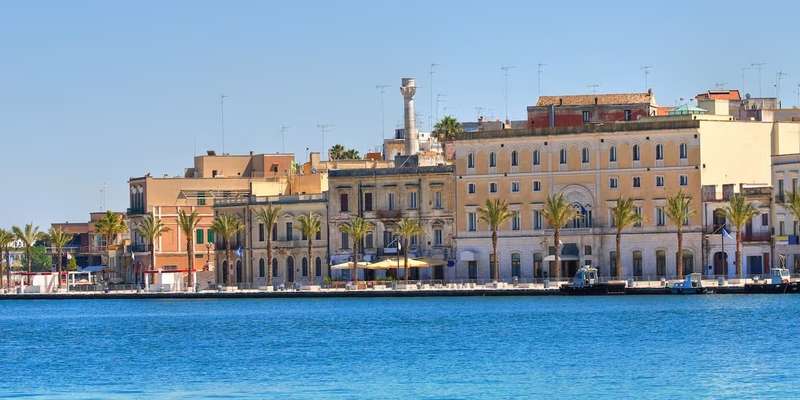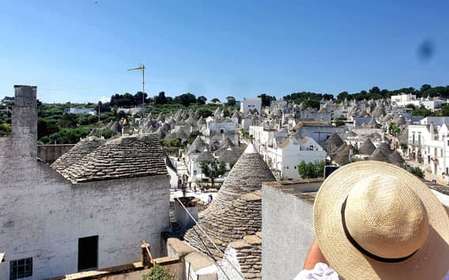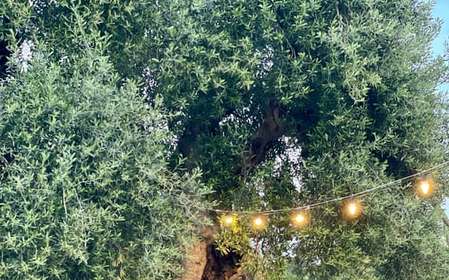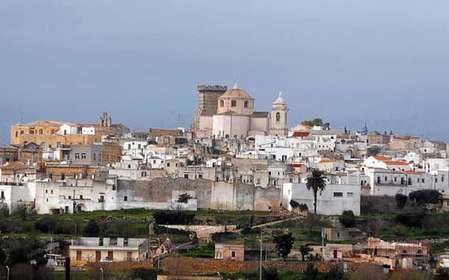- Home
- Useful Tips
- Walking tour in Brindisi for...
First-time visitors to Brindisi often miss the city's authentic charm by following generic tourist routes. Over 60% of day-trippers leave without seeing the Byzantine churches or Roman columns that locals cherish, trapped in crowded piazzas instead. The maze-like historic center becomes frustrating without navigation insights – a problem compounded by limited English signage and midday heat that saps enjoyment. Worse, cruise ship arrivals create sudden bottlenecks at key attractions, turning what should be leisurely exploration into stressful shuffling. These missed opportunities matter because Brindisi's layered history (Greek, Roman, Norman) reveals itself through subtle architectural details best appreciated at the right pace and sequence.


Navigating Brindisi's confusing old town without a map
Brindisi's centro storico disorients even seasoned travelers with its seemingly identical alleys branching off Corso Garibaldi. The trick lies in using the 15th-century Torre dell'Orologio as your north star – its visible clock tower helps reorient when lanes dead-end unexpectedly. Start early when shadows cast clear directional markers against the light-colored stone. Local shopkeepers traditionally place blue-and-white ceramic tiles near significant but unmarked sites; spotting these hidden clues leads to quiet courtyards with medieval wells. Free municipal maps lack these nuances, but a simple clockwise walking pattern from the Roman columns ensures you cover key areas efficiently. Duck into cool churches like San Giovanni al Sepolcro when the midday sun peaks – their often-overlooked frescoes provide artistic respite alongside temperature relief.
Timing your walk to avoid cruise ship crowds
Three days weekly, up to 3,000 cruise passengers flood Brindisi's compact center between 10am-2pm, overwhelming small landmarks. Savvy independent travelers reverse the standard route: begin at the less-visited Monumento al Marinaio d'Italia at the harbor's edge where groups rarely go, then work inland as crowds disperse for lunch. The 7:30am opening of the Cathedral's crypt offers peaceful viewing of 12th-century mosaics before ships dock. Local guides know precisely when security staff rotate at the Swabian Castle, creating brief windows for crowd-free photography of the Adriatic vistas. If trapped in a sudden bottleneck near the Appian Way terminus, slip into Enoteca Letteraria for a prosecco break – their back room displays ancient Roman pottery found during renovation, a quiet alternative to packed museums.
Discovering authentic trattorias away from tourist traps
The tempting menus along Lungomare Regina Margherita hide a disappointing truth – most seafood served there gets frozen during off-season. For truly fresh catches, follow the linen aprons hung outside doorways in the Seminario district, a local code for daily market deliveries. Family-run Osteria La Locanda dei 2 Mori appears unremarkable but serves handmade orecchiette using a 100-year-old pasta board visible in the back. Their €15 lunch special includes unlimited local Primitivo wine, a secret Brindisi hospitality tradition. Budget-conscious walkers should note that bakeries near Piazza Mercato sell stuffed focaccia for €3 – perfect for picnic lunches by the Roman port ruins. Evening passeggiata (stroll) along Via Carmine reveals snack bars serving crisp taralli crackers with wild fennel, a Puglian specialty rarely mentioned in guides.
Essential rest stops most tours ignore
Continuous walking on Brindisi's uneven limestone pavements exhausts feet faster than visitors anticipate. The shaded Giardinetti Publici offers not just benches but a free footbath fed by natural springs – a relic of Roman-era waystations. Smart travelers carry an empty bottle to fill at the 17th-century Acquedotto delle Fate fountain near Santa Teresa church; its magnesium-rich water prevents muscle cramps during long explorations. When energy flags, seek out the unassuming Caffè Roma near the post office. Their €1 espresso comes with a complimentary almond paste cookie, a tradition since 1946. For proper respite, the cloister at Palazzo Granafei-Nervegna remains open to the public despite being absent from most maps – its orange trees and 16th-century well make an ideal 20-minute recovery stop.



